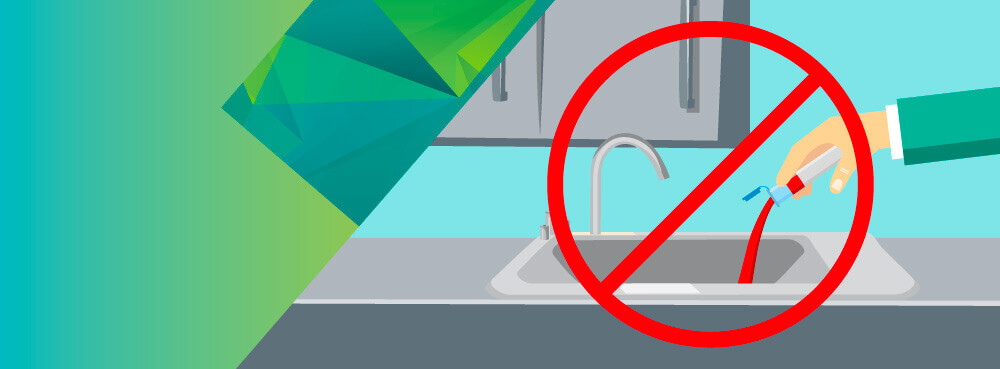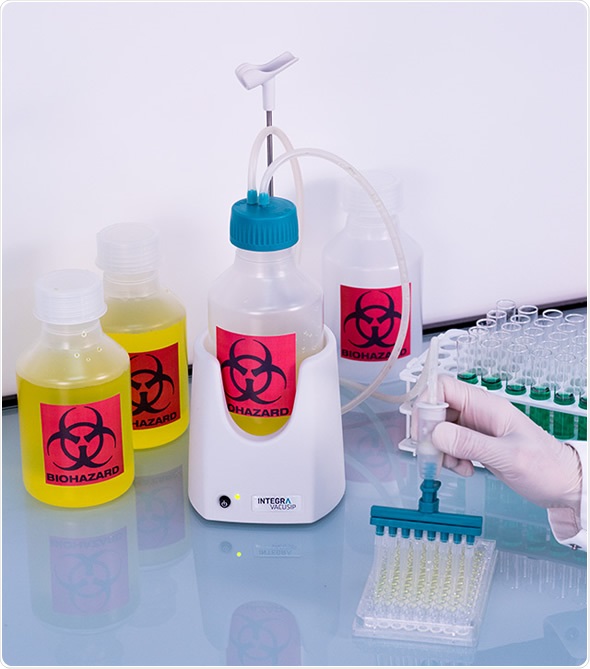Just How Fluid Garbage Disposal Works: A Thorough Introduction of Techniques and Technologies Employed

Introduction of Fluid Waste Kind
The complexity of liquid waste types necessitates a detailed understanding of their characteristics and implications for disposal. Liquid waste can broadly be categorized into a number of kinds, consisting of industrial, local, farming, and contaminated materials. Each classification shows distinct residential or commercial properties, calling for certain monitoring techniques to alleviate ecological and health and wellness dangers.
Industrial liquid waste stems from making processes and frequently contains a variety of impurities, such as heavy metals, solvents, and natural compounds. Municipal fluid waste, mostly comprising wastewater from households and business establishments, contains natural issue, nutrients, and pathogens (industrial wastewater treatment). Agricultural fluid waste, including drainage from ranches, may have fertilizers, chemicals, and pet waste, posing threats to water high quality and ecosystems
Hazardous liquid waste is characterized by its toxicity, sensitivity, or possible to cause injury. Comprehending these varied fluid waste kinds is crucial for developing effective disposal techniques and making sure conformity with environmental guidelines.
Physical Therapy Approaches

Testing is the initial action, where larger fragments and debris are eliminated from the liquid waste making use of screens or grates. This process shields downstream devices from damages and makes sure smoother operation. Following screening, sedimentation makes use of gravitational pressure to different solids from fluids. In sedimentation storage tanks, heavier fragments clear up near the bottom, developing a sludge layer, while the clarified fluid can be further dealt with.
Filtering is one more crucial technique that entails passing the fluid with porous materials, such as sand or membrane layers, to capture smaller sized bits. This step boosts the quality of the fluid, making it appropriate for succeeding treatment procedures.

Chemical Treatment Strategies
Chemical treatment strategies are vital for effectively handling liquid waste, especially in addressing liquified and colloidal contaminants that physical techniques might not sufficiently remove. These methods make use of various chemical representatives to neutralize, precipitate, or change hazardous compounds right into less dangerous forms.
One typical approach is coagulation and flocculation, where chemicals such as alum or ferric chloride are added to promote the gathering of put on hold particles. This process boosts sedimentation, permitting much easier removal of the resulting sludge. Furthermore, oxidation procedures, using agents like chlorine or ozone, are utilized to break down intricate natural substances and pathogens, making the waste much safer for discharge or additional therapy.
Neutralization is another crucial method, which readjusts the pH of acidic or alkaline waste streams to neutral degrees, preventing potential harm to downstream systems and the atmosphere. Moreover, progressed oxidation procedures (AOPs) make use of mixes of oxidants and ultraviolet light to weaken persistent pollutants, achieving a higher level of treatment effectiveness.
Organic Therapy Procedures
Organic therapy procedures play an essential function in the administration of fluid waste by making use of microbes to break down raw material and lower impurity degrees. These procedures can be extensively categorized into aerobic and anaerobic therapies, each employing details microbial areas to attain efficient waste deterioration.
Cardiovascular treatment involves using oxygen to facilitate the breakdown of natural products by germs. This process is typically implemented in activated sludge systems, where oygenation storage tanks offer a conducive environment for microbial development, causing the oxidation of organic pollutants. The resultant biomass can be divided from dealt with effluent with sedimentation.
On the other hand, anaerobic therapy happens in the absence of oxygen, relying upon different bacteria to damage down my company organic matter. This approach is especially advantageous for high-strength waste, as it creates biogas, a sustainable energy resource, while decreasing sludge production. Technologies such as anaerobic digesters are regularly employed in industrial and local applications.
Both aerobic and anaerobic biological therapies not just minimize the ecological impact of fluid waste but additionally facilitate resource healing, making them vital elements of lasting waste management methods. Their adaptability, effectiveness, and performance sustain their widespread application throughout various industries.
Arising Technologies in Disposal
Innovative methods to fluid garbage disposal are rapidly developing, driven by developments in innovation and a boosting emphasis on sustainability. Amongst these arising technologies, membrane layer bioreactors (MBRs) have obtained grip for their capability to incorporate organic therapy with membrane layer filtration, resulting in top notch effluent that can be recycled in numerous applications. MBRs make it possible for smaller footprints and more efficient operations compared to conventional systems.
One more appealing advancement is the usage of anaerobic food digestion integrated with nutrient healing modern technologies, which not just deals with fluid waste however likewise produces biogas and recuperates important nutrients like nitrogen and phosphorus. This double benefit enhances resource efficiency and reduces ecological influence.
In addition, progressed oxidation procedures (AOPs) are being embraced for the deterioration of complicated organic pollutants. These methods utilize powerful oxidants and stimulants to damage down pollutants at the molecular level, providing a highly effective remedy for challenging waste streams.
In addition, the combination of man-made intelligence find out this here and machine learning in waste monitoring systems is enhancing operational performance and anticipating maintenance, bring about minimized costs and boosted ecological compliance. These modern technologies show a considerable change in the direction of more effective and lasting liquid garbage disposal methods.
Conclusion
Finally, efficient liquid garbage disposal necessitates a comprehensive understanding of numerous methods and technologies. The assimilation of physical, chemical, and organic treatment approaches guarantees the efficient monitoring of diverse waste kinds. Furthermore, the introduction of innovative innovations enhances treatment efficiency and promotes sustainability in waste monitoring practices. By constantly progressing these methodologies, it ends up being feasible to deal with the expanding obstacles linked with fluid waste, inevitably adding to environmental management and resource healing.
Fluid waste disposal is a vital Find Out More facet of ecological management, needing a detailed understanding of numerous techniques and innovations customized to various waste types. Liquid waste can extensively be classified right into numerous types, including commercial, municipal, agricultural, and hazardous waste. Agricultural liquid waste, including runoff from farms, might have plant foods, chemicals, and pet waste, posturing threats to water high quality and ecological communities.
Numerous physical therapy techniques play an important function in handling liquid waste efficiently - industrial wastewater treatment.In conclusion, effective fluid waste disposal demands a thorough understanding of different methods and technologies